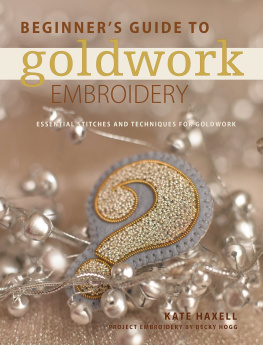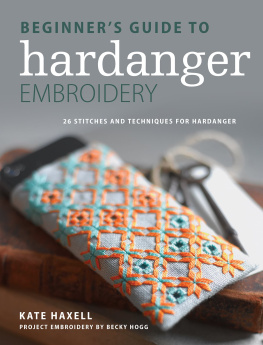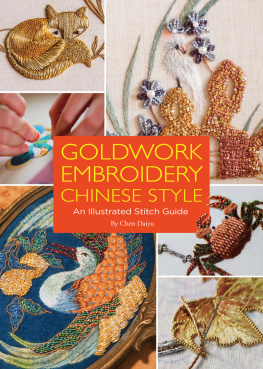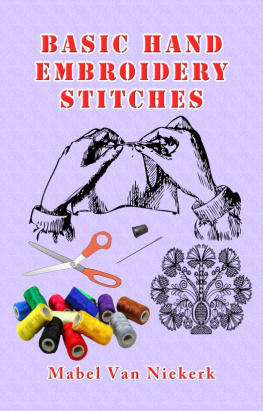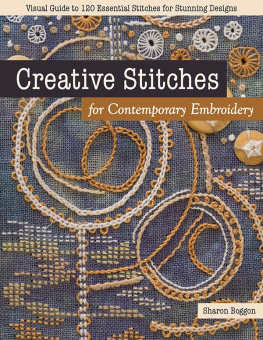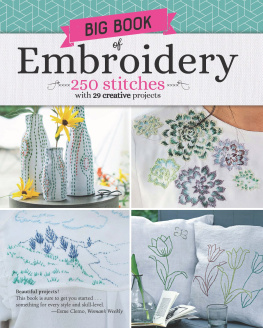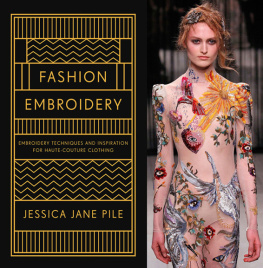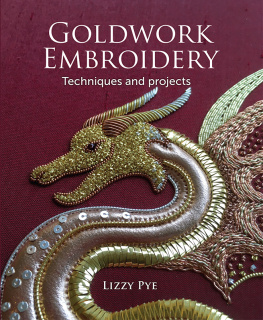Contents
Guide
BEGINNERS GUIDE TO
goldwork
EMBROIDERY
ESSENTIAL STITCHES AND TECHNIQUES FOR GOLDWORK
KATE HAXELL
PROJECT EMBROIDERY BY BECKY HOGG

www.sewandso.co.uk
GETTING STARTED
Very little is required for your first adventures in embroidery; some fabric, threads, a needle, a simple frame, scissors and a fabric marker will see you through a few projects. However, there are other items that will become essential if you want to do more and better embroidery, and some items that are useful, but not vital. The following pages illustrate equipment and explain the techniques needed to make the most of it. You will also find the most basic embroidery stitches.

Equipment
Basic embroidery equipment is inexpensive and widely available, so youll have no problems finding what you need. It is worth buying good-quality needles and thread, and the best embroidery scissors you can afford.
FABRICS
Different styles of embroidery require different fabrics, but added to that there is personal taste and any practical considerations.
Plain-weave fabric in linen or cotton is the classic embroiderers fabric and an excellent choice for beginners to freestyle embroidery. These fabrics handle well and have a smooth, tightly woven finish that is easy to work with. If the finished item is likely to be laundered then wash the fabric before you begin stitching to pre-shrink it.
Evenweave fabric has the same number of warp and weft strands to the inch and is designed for counted thread work, such as cross stitch, Hardanger, blackwork, pulled thread, and drawn thread. You can buy evenweave in 100 per cent linen and cotton, and in some synthetic and natural fibre mixes. Evenweave fabric is graded by the number of strands to the inch (also called threads per inch), that is, the number of warp or weft strands of fabric in a measured inch. This ranges between 12 and 32, with 32 being the finest. A fabric with 24 or 26 strands per inch is suitable for a beginner to try most counted thread techniques.
Aida is a type of evenweave fabric made from 100 per cent cotton and is woven in clearly defined blocks to make stitching very easy. The sizes of these blocks determine the size of the stitches. Aida is generally available in counts of 7, 10, 11, 12, 14, 16, 18 and 22 blocks per inch. You will usually be working each stitch over one block, so if you use 11-count Aida you will fit 11 stitches on one inch of the fabric. If you are a counted thread embroidery novice, Aida is great for your first few projects.
Hardanger is a specialist evenweave fabric for stitching the embroidery style of the same name. It usually has 22 strands to the inch and is woven with pairs of strands separated with distinct holes for the stitches, making it very easy to count the strands. Hardanger fabric is also stiffer than many other evenweave fabrics so that it can support the stitching effectively.
Crewel linen twill is a medium-weight twill made specifically for hand embroidery; its sometimes called Jacobean twill. It is a very finely, tightly woven fabric and the weave does not split or loosen as you pierce the fabric with the needle. Do not use an upholstery twill as a substitute because it will not be tightly woven enough. As the name suggests, crewel twill is the best fabric for crewelwork embroidery, and you can also work freestyle embroidery on it. A good-quality herringbone weave fabric or a plain weave can be used instead of twill.
Silk can give embroidery a lavish, elegant look. You can work on fine silks, but for most purposes a firm silk such as washed silk, thick habutai, dupion, raw silk or taffeta is best. Silk is often used for goldwork, but can be used for freestyle embroidery as well. Silk fabric should usually be stabilised onto calico before being embroidered.
Woven canvas is the fabric used for canvaswork. This is a wide-weave fabric with very distinct holes to accommodate thicker threads and wools, and it comes in two forms. Single canvas is woven with just one warp and weft strand between each hole. Like evenweave fabric it is graded by strands to the inch, and can have from 10 to 24 strands. This canvas is suitable for most kinds of canvas stitches. Double canvas (sometimes called Penelope canvas) has two strands between each hole and is used for tramming or for very fine stitching.

THREADS
There is a huge range of threads available and many pages would be required to discuss them all. Therefore, shown and explained here is just a small selection to get you started.
Anchor Coton Broder is a tightly twisted, 3-ply mercerised 100 per cent cotton with a lustrous finish. It is most commonly used for blackwork and whitework, but it can be used for any surface embroidery. It is available in six tickets, or weights, with ticket 16 being the most popular. This ticket is available in a good range of colours, while the others are only available in black, white and off-white.
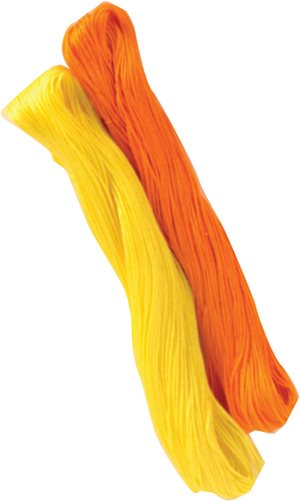
Anchor Pearl Cotton is a 2-ply, loosely cabled thread made from 100 per cent Egyptian cotton, and it has a silky finish. It is available in several thicknesses 3, 5, 8 and 12, with 12 being the finest and in a wide range of colours. This thread is commonly used for counted thread techniques, but can be used in almost any style of embroidery.
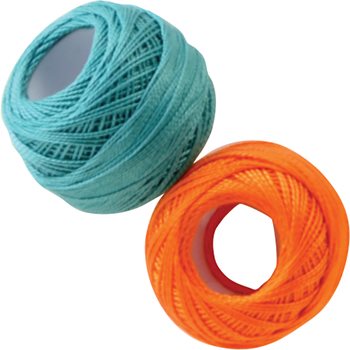
Anchor Stranded Cotton is a very versatile embroidery thread and is used in many techniques. It is made of 100 per cent cotton and is composed of six separate very fine strands. Stranded cottons are the most popular embroidery thread because the fine strands can be split off into smaller groups usually two or three strands to create delicate stitching. There is a huge range of colours in the Anchor collection of stranded cottons.
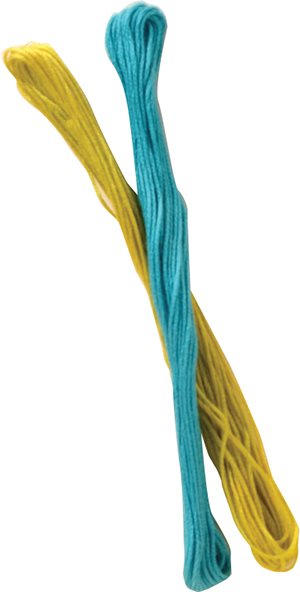
Anchor Tapisserie Wool is 4-ply woollen thread made from 100 per cent pure new wool and is used for canvaswork. The tight twist of the plies helps minimise fraying and fluffing as the thread is drawn through the canvas. The thread is also mothproof, which is important when it comes to wool! Again, the Anchor collection has a huge range of colours to choose from.
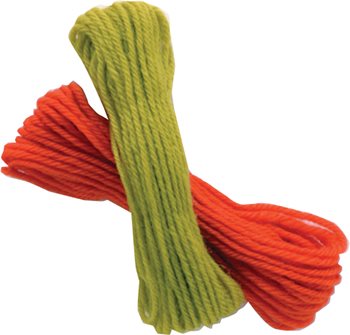
Appletons Crewel Wool is loosely twisted 2-ply wool thread made from 100 per cent, mothproofed wool. It is a fine wool with a soft, matte finish and comes in a wide range of colours. The loose twist means that it will fluff if the lengths used are too long 30cm (12in) is a good length to use and it can become untwisted as you stitch.

